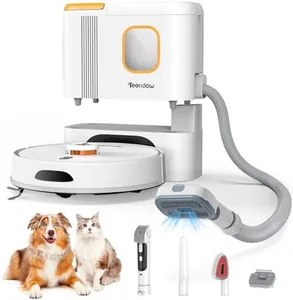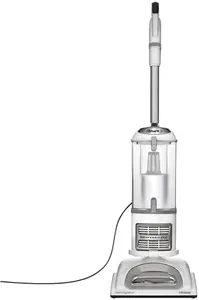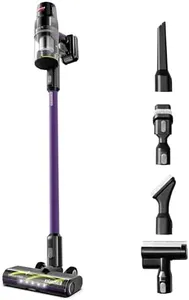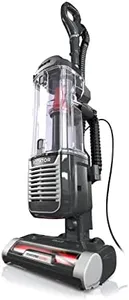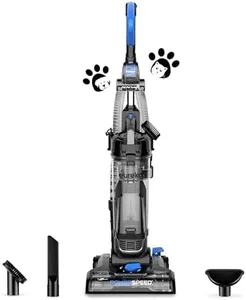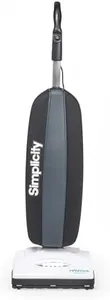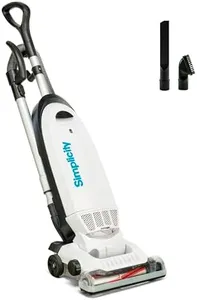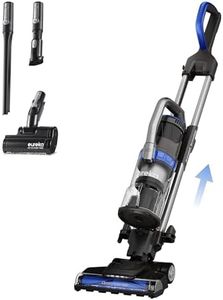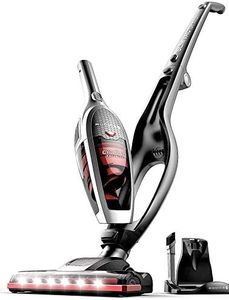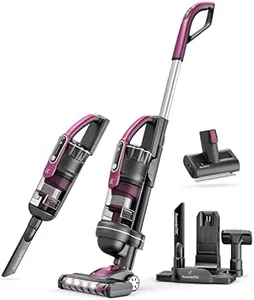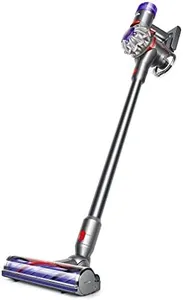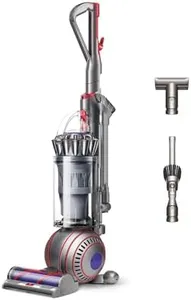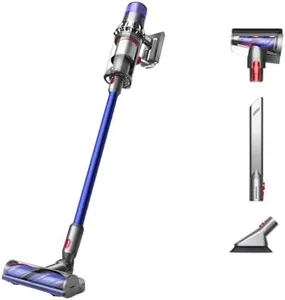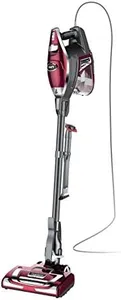10 Best Pet Hair Vacuum Cleaners 2025 in the United States
Our technology thoroughly searches through the online shopping world, reviewing hundreds of sites. We then process and analyze this information, updating in real-time to bring you the latest top-rated products. This way, you always get the best and most current options available.

Our Top Picks
Winner
Shark Upright Vacuum, Navigator Lift-Away with Swivel Steering, HEPA Filter, XL Dust Cup, Pet Power, Dusting Brush, and Crevice Tool, Perfect for Pet Hair, White/Silver, NV356E
The Shark Navigator Lift-Away NV356E is a solid choice for pet owners, primarily due to its strong suction power and effective brush roll designed to tackle pet hair and dander. The vacuum features a lift-away functionality, allowing you to detach the pod and clean hard-to-reach areas like stairs and furniture with ease. Its anti-allergen complete seal and HEPA filter work together to trap 99.9% of dust and allergens, making it a good option for those concerned about air quality.
One of its standout features is the brushroll shutoff, which lets you transition smoothly between deep carpets and bare floors. This versatility is complemented by swivel steering, enabling easy maneuverability around furniture and through tight spaces. The extra-large dust cup means less frequent emptying, which can be a real time-saver for longer cleaning sessions.
However, there are some trade-offs to consider. At 13.7 pounds, it may not be the lightest vacuum available, making it slightly cumbersome for extended periods of use or for those who struggle with heavier equipment. The noise level of 80 dB could be a concern for users who prefer quieter cleaning solutions, particularly in households with sensitive pets. The included attachments, such as the pet power brush and crevice tool, enhance its cleaning capabilities, allowing for detailed cleaning in corners and on delicate surfaces. While the vacuum is certainly effective, those looking for a cordless option might find this model lacking, as it is not cordless.
The Shark Navigator Lift-Away NV356E is well-suited for pet owners needing a reliable vacuum to manage pet hair and allergens. Its strengths lie in functionality and performance, but potential buyers should weigh the weight and noise level against their cleaning needs.
Customer Highlights
A summary of real customer reviews to highlight what shoppers are saying!Bissell Cleanview XR Pet 300W Cordless Vacuum with Removable Battery, 3797V
The Bissell Cleanview XR Pet 300W Cordless Vacuum is a solid option for pet owners looking for an efficient way to manage pet hair around their homes. Its standout feature is the powerful 60% stronger motor compared to some competitors, which helps to enhance suction performance, making it effective on various surfaces including carpets, hard floors, and upholstery. The deep cleaning fur brush attachment is particularly helpful, providing a thorough clean on furniture and in cars, which are often challenging areas for pet hair removal.
One of the significant advantages of this vacuum is its cordless design, offering up to 40 minutes of runtime on a single charge. This freedom from cords allows you to clean without worrying about finding an outlet, which can be a major convenience in larger spaces. The lightweight design (5.9 pounds) also makes it easy to maneuver around your home.
On the downside, the vacuum's filtration system uses a foam filter, which may not capture as many allergens compared to HEPA filters found in some higher-end models. Additionally, the dustbin capacity is relatively small at 0.3 liters, meaning you'll need to empty it frequently, especially during more extensive cleaning sessions. While the vacuum is praised for its performance, some users may find it a bit noisy, particularly in its higher power settings.
Customer Highlights
A summary of real customer reviews to highlight what shoppers are saying!Shark ZU102 Rotator Pet Upright Vacuum with PowerFins HairPro & Odor Neutralizer Technology, Charcoal, 2.9 L Dust Cup
The Shark ZU102 Rotator Pet Upright Vacuum is designed specifically to address pet hair challenges. Its POWERFINS HAIRPRO feature effectively captures stubborn pet hair on various surfaces, and the self-cleaning brush roll helps avoid the common issue of hair wrapping around the brush. The vacuum’s filtration is impressive, thanks to the Anti-Allergen Complete Seal Technology and HEPA filter, which trap 99.99% of dust and allergens, making it a good option for allergy sufferers. The inclusion of an odor neutralizer helps maintain a fresher-smelling home, which is a thoughtful addition for pet owners.
Its 3XL dust cup allows for extended cleaning without frequent emptying, enhancing convenience for larger homes or more extensive cleaning sessions. The extendable hose and swivel steering improve maneuverability, enabling you to reach tight spaces and high areas with ease. However, the vacuum is corded, which might limit its range compared to cordless models, and it may be somewhat cumbersome to manage the cord during use. It’s also worth noting that the vacuum, while effective, could be on the louder side, which might be a consideration for those sensitive to noise.
The included attachments, such as the crevice tool and pet multi-tool, add versatility to the vacuum’s functionality. At 2.9 liters, the dust cup capacity is generous, but the weight could pose a challenge for those who prefer a lighter vacuum. The 5-year limited warranty offers peace of mind regarding durability and longevity. This makes the Shark ZU102 particularly well-suited for pet owners who need a reliable and effective solution for managing pet hair and maintaining a clean home environment.
Customer Highlights
A summary of real customer reviews to highlight what shoppers are saying!Buying Guide for the Best Pet Hair Vacuum Cleaners
Choosing the right vacuum cleaner for pet hair can make a significant difference in maintaining a clean home. Pet hair can be stubborn and challenging to remove, so it's essential to select a vacuum that is specifically designed to handle it. When shopping for a pet-hair vacuum cleaner, consider the following key specifications to ensure you get the best fit for your needs.FAQ
Most Popular Categories Right Now
